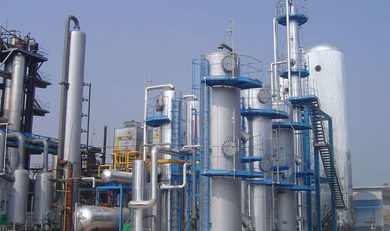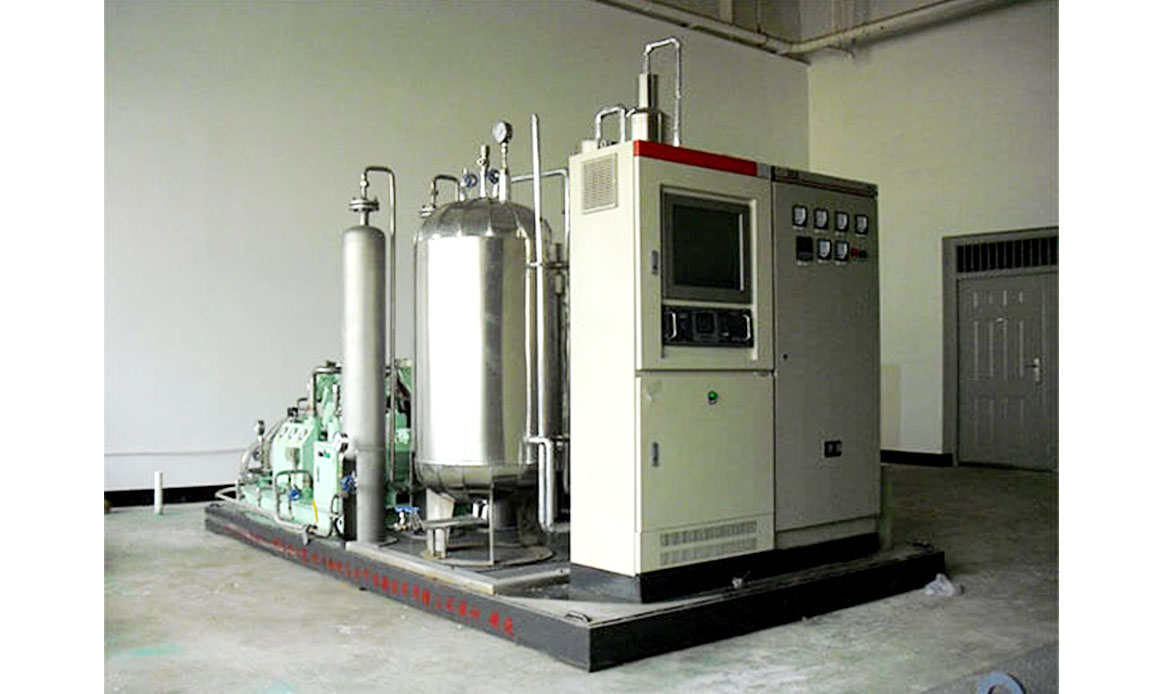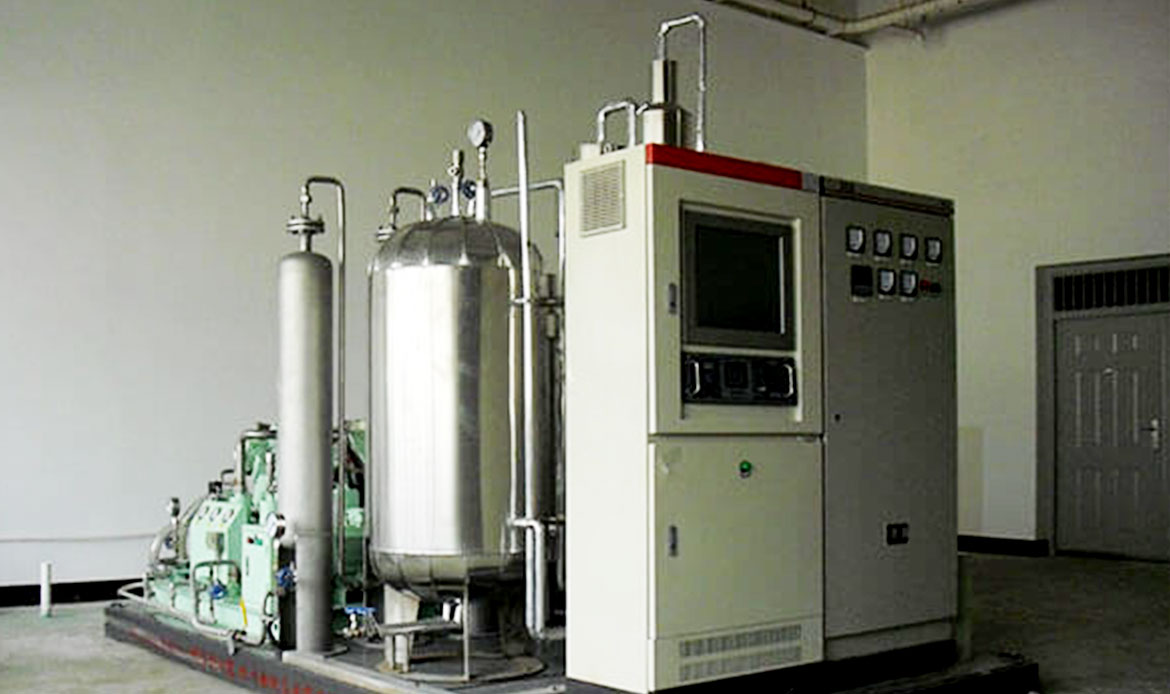
CO2 Generator from Carbon-Contained Fuel
Some customers may only need CO2 in small amount, but it is expensive and hard to get from the local market. Meanwhile, on the market, the fuel is rich and cheap. Then our CO2 generator from carbon-contained fuel must be your best choice. It may serve either as an industrial carbon dioxide generator or food-grade LCO2 recovery plant.
For this device, the CO2 gas comes from the combustion of carbon fuels, such as coal, LNG, diesel and petrol. The gas got through this way is clean, pure, and easy to handle. Then the gas is refined by MEA adsorption and desorption, as well as cryogenic distillation techniques. We also have treatment of extracting LCO2. The whole progress consists of five steps: combustion, purification, compression, refrigeration and storage.

Description
Advantages
The CO2 generator from carbon source has the following features:
1. skid-mounted design, small space occupation, convenient shipping and installation;
2. advanced detection and control systems to ensure normal, stable, secure, and reliable running of the device;
3. applicable fuel: LPG, LNG, gasoline, diesel oil and other carbon fuels
4. output: 30-500 kg/h
5. purity: customizable, the maximum can reach food grade
Purchasing Guide
If you want to buy our CO2 generator from carbon-contained fuel, please advise about the following information, and we will offer supports accordingly:
1. quality (industrial or food grade) and quantity (measured in kg/hr) requirements
2. raw material (such as natural gas, oil, coal or others)
3. basic conditions of project sites (such as altitude, barometric pressure, ambient temperature, extreme temperatures, earthquake intensity, maximum wind speed, etc)
4. public engineering conditions (such as power supplies, motor starting requirement, whether there is a supply of cooling water)
Technical Parameters
| Main features | 100kg/h food-grade LCO2 recovery plant from fuel oil combustion |
|---|---|
| Recovery capability | 2400kg/d, 100kg/h LCO2 |
| LCO2 Characters | cryogenic liquid CO2, pressure: 1.8-2.0MPa , temperature: -18 ℃ to -25 ℃ |
| LCO2 quality standards | International Society of Beverage Technologists (ISBT) standards |
| Gas source | diesel combustion |
| Water consumption | primary water: 300kg/h; cooling water:60m3/h |
| Power consumption | installed power: 100kw (400V), device with the largest power consumption: 30kw |
| Oil consumption | 35kg/h |
Device Structure and Schematic Flow Diagram of Production
Shipping & Delivery
The transportation of large equipment, such as the air separation unit, PSA gas plant, and the CO2 recovery plant, has always been a concern of overseas customers. The unloading and lifting must be careful. How to reduce extra handling fees is also one of the issues to be taken into consideration.
We can provide you with a worry free delivery:
1. We maintain long-term cooperation with some partner forwarders. So we can:
a. tell the accurate shipping date and quote the best shipping rates
b. book appropriate cargo space and choose the best shipping method: container, roll-on-roll-off ship, open top container or bulk carrier
c. make appointment for commodity inspection, arrange shipment, and prepare necessary documents for customs clearance
2. We have our own private wharf. Even 300m3 pressure vessels can be loaded within the factory and sent to Shanghai port.
3. We are quite experienced in loading and fixing containers, protecting the cargo from any possible damage on the way. The cargos will be in perfect condition upon the arrival at the destination.
4. The bulk ship and roll-on-roll-off ship are for the delivery of large and bulky cargos. The destination port may not be equipped with large cranes, and at somewhere the lifting charges are quite expensive. Taking these factors into consideration, we will choose ships equipped with cranes to reduce costs for customers. Our forwarder will arrange appropriate crane lifting and attach the cargo to the deck or cabin.
5. We will track the delivery until you receive the cargo.
6. The vast majority of customers receive cargos intact, but there is still likeliness of slight painting scratches. In this occasion, we suggest customers to fix the paint on their own if necessary. In addition, customers may purchase transport insurance to further reduce the risk of cargo damage.
-
Date
-
Category
-
Tags
-
Share
Related Projects



